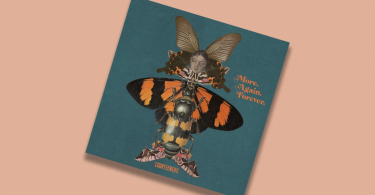If you were asked to pinpoint the roots of Goth and Emo culture in Britain you’d be forgiven for lacking an exhaustively factual answer.
If you were asked to pinpoint the roots of Goth and Emo culture in Britain you’d be forgiven for lacking an exhaustively factual answer. Some argue that Goth was a reaction to 80s punk and that Emo branched off. Others insist that Goth owes everything to Joy Division’s melancholia and that Emo has no definitive base-point. In any respect, the blurring lines of evolving subcultures, their definitions and their beginnings, are always sure to spark debate.
However, lately there has been a far more pressing discussion of the UK’s subcultures, one that hinges around the violent attack which killed Sophie Lancaster in 2007. The attack which left Sophie with fatal injuries was committed because both Sophie and her boyfriend were dressed in a ‘gothic’ fashion.
The Sophie Lancaster Foundation has since provided a lasting legacy for Sophie as well as addressing intolerance and prejudice, even gaining the support of the Greater Manchester Police who now recognise attacks on Goth and Emo subcultures as hate crimes. They are the first police force in the UK to do so.
Yet, even though this legislation will aim to defend Goth and Emo subcultures alongside people who are victimised because of their religion, race, gender, sexual preference or disabilities, it is being challenged by many as a ‘watering down’ of the legal system.
The two main concerns are a fear over rampant political correctness and the issue of definition: will people have to prove themselves as ‘goth-enough’ to receive the full protection of the law? And could this open the floodgates to further subculture legislation, encompassing groups such as skaters?
Clearly there are many splintered subculture groups around the UK, evidentially the protection of which is not valued to the same degree as the more familiar victims of hate crime. In fact, many respond to this new legislation with mockery, in light of Goth and Emo protection one journalist stated that he could now contact Crimewatch for being called ‘poncy’ back in 1983.
Clearly the importance of addressing current prejudice and intolerance is lost on some. Whilst worries regarding the finer elements of hate crime enforcement may be somewhat justified, a simple truth remains—those who are victimised should be protected. As Dr Neil Chakraborti, a member of The University of Leicester’s Criminology Department succinctly states, ‘hate is hate.’
Cultures change constantly, and the current ‘five-strand’ embodiment of hate crime legislation, whilst vitally necessary, does not acknowledge other groups which are met by equally severe intolerance. A failure to change with the times is a failure to enforce the law correctly.
Yes, the protection for Goths and Emos will take time to perfect, new legislation always does. But, regardless, it is a step in the right direction. Ignoring the rights that any victimised group is entitled to, new or old, simply shows how intolerant our society can be. It’s a sad time when rights are questioned for fear that more rights, for many others, may be the consequence.
I fail to see where the new rights for one subculture, fuelling the lawful protection of others impacts negatively on our society. I fail to see how equality can be questioned because of a lack of familiarity with those who are victims. Clearly a new mentality is needed here, the start of which may well be the legislation that the Sophie Lancaster Foundation made possible.
Cynics aside, fairness can only make our society stronger, and hopefully many other cities follow the example of the Greater Manchester Police.
Hate is hate.
What do you think? Will this legislation take off? Will other cities follow? Have your say in the comments section below, on Facebook or on Twitter.








